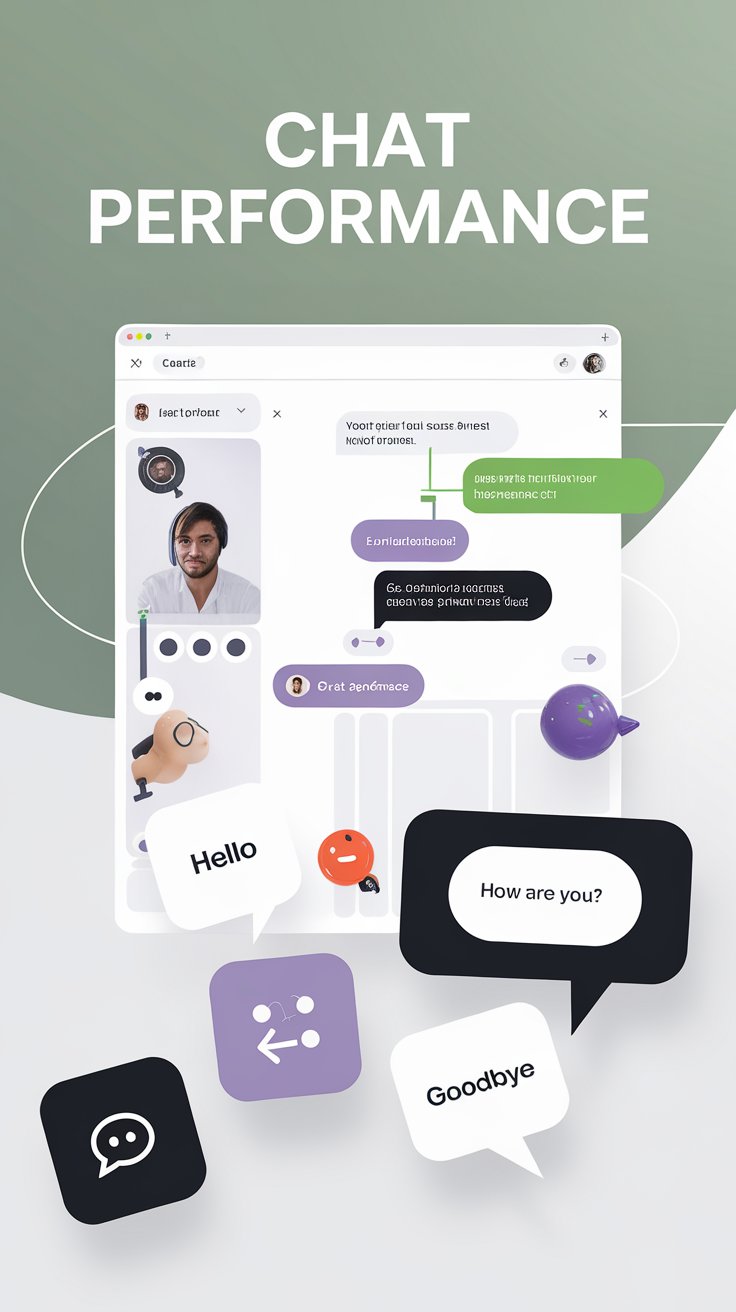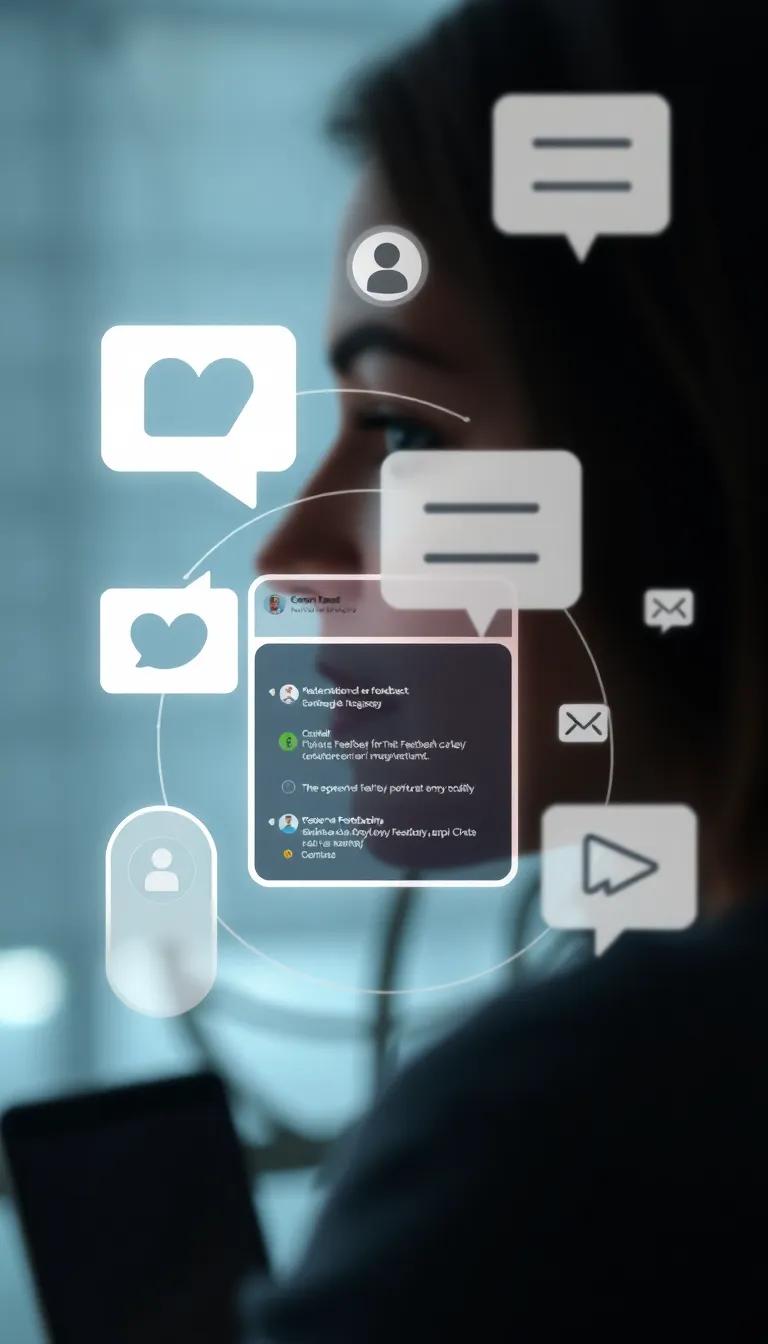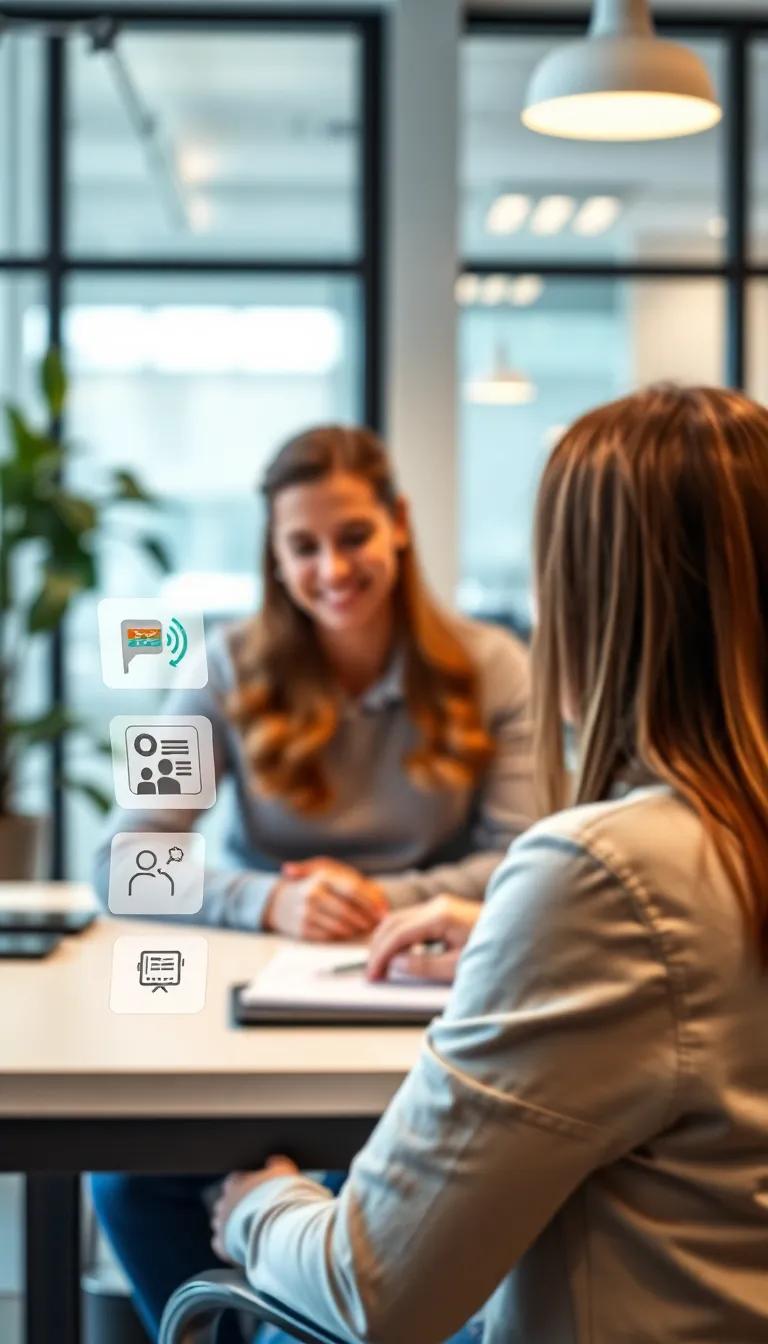Introduction
The increasing reliance on online communication has made website chat widgets essential tools for businesses seeking to enhance customer experience. These chat systems not only facilitate real-time conversation but also play a significant role in improving chat performance through personalized interactions. In this article, we delve into effective strategies that can significantly elevate the effectiveness of your website chat widgets, allowing businesses to engage with their audience more efficiently.
We will explore various aspects, including the key features that contribute to successful chat performance and the importance of data analysis in crafting chat experiences. Furthermore, we will provide actionable tips on how to implement these strategies without incurring hefty costs. By understanding these core elements, businesses can refine their approach to website chat and ultimately boost customer satisfaction and conversion rates.
Understanding Chat Performance Metrics
To maximize the success of a free website chat widget, it is essential to understand the key metrics that define chat performance. These metrics not only provide insight into how well the chat feature is functioning but also significantly influence customer interactions and overall business outcomes.
Key Performance Metrics
Among the fundamental metrics to consider are response time, customer satisfaction scores, and engagement levels. Each of these plays a pivotal role in shaping the user experience during chats.
Response time refers to how quickly a chat agent responds to user inquiries. Rapid response times are critical; studies show that customers expect an immediate acknowledgment of their questions. A response time of under 10 seconds is ideal. Delayed responses can lead to increased frustration and a perception of poor service, which may ultimately drive customers away.
Customer satisfaction scores (CSAT) serve as a vital indicator of how well the chat widget is meeting the needs of users. This metric is often gathered through post-chat surveys where users rate their experience. High satisfaction scores indicate that the chat feature is effective in resolving issues and providing valuable information. Conversely, low scores may reveal gaps in service that require immediate attention.
Engagement levels measure the extent to which users interact with the chat widget. This can include the number of initiated chats, the average duration of each session, and how often users return for additional inquiries. High engagement levels typically reflect a user-friendly interface and the ability to provide relevant, helpful information. Tracking these metrics allows businesses to identify trends, such as peak chat times or frequent inquiries, which can inform staffing and resource allocation.
Impact on Business Outcomes
Understanding these performance metrics goes beyond merely assessing the chat function. They directly correlate to important business outcomes, such as conversion rates, retention, and customer loyalty. For instance, a chat widget that boasts low response times and high customer satisfaction scores can enhance a user’s perception of a brand. This positive interaction not only fosters trust but also encourages repeat business and referrals.
Comprehending and optimizing chat performance metrics is crucial for achieving success with free website chat widgets. By focusing on response times, customer satisfaction scores, and engagement levels, businesses can significantly enhance customer interactions and, consequently, improve overall business performance.
Leveraging AI for Enhanced Interaction
Optimizing Chat Performance Through Automated Interactions
In the pursuit of improving chat performance, the role of artificial intelligence has become increasingly pivotal. AI-driven tools such as chatbots and automated response systems significantly enhance user engagement, offering round-the-clock support while maintaining high-quality interactions. These technologies allow businesses to handle a larger volume of inquiries without compromising the personalized touch that customers increasingly expect.
One of the primary benefits of AI integration is the capability to analyze vast amounts of data in real-time. By leveraging this capacity, chatbots can effectively determine user intent and context, enabling them to respond with greater relevance. This capability not only minimizes response times but also improves overall customer satisfaction. For example, when a user engages with a chat widget, the underlying AI can interpret the query and provide tailored responses or direct the user toward appropriate resources, streamlining their experience.
Automated responses play a crucial role in chat performance enhancement. They can be programmed to handle frequently asked questions, perform initial troubleshooting, and guide users through common processes. This not only frees human agents to focus on more complex issues but also ensures that users receive instant assistance, significantly reducing wait times and increasing resolution rates. Furthermore, these systems can operate seamlessly outside of regular business hours, providing support when human representatives are unavailable.
Beyond facilitating answers and resolving issues, AI also contributes to the richness of user engagement. Advanced chatbots can utilize natural language processing to emulate human-like conversations, making interactions feel more genuine. This can significantly elevate user experience, leading to higher retention rates and increased brand loyalty. Additionally, by analyzing user behavior and feedback, AI can continuously refine responses, adapting to evolving user preferences and improving performance over time.
Incorporating AI into free website chat widgets can represent a game-changer for businesses looking to optimize chat performance. By combining rapid response capabilities with engaging interactions, organizations enhance their service standards, leading to improved user satisfaction and ultimately driving higher conversion rates. As AI technology progresses, the potential for further enhancing chat performance will only grow, positioning businesses to stay ahead in the competitive landscape of customer engagement.
Crafting Effective Chat Scripts for Enhanced Chat Performance
Mastering User Engagement Through Tone and Personalization
Creating effective chat scripts is pivotal in optimizing chat performance and maximizing user engagement. The choice of tone can significantly influence how users perceive a brand and their overall experience. A friendly, approachable tone generally fosters a sense of trust and comfort among users, encouraging them to interact more openly. Conversely, a curt or overly formal tone may create barriers, leading users to disengage. Understanding the target audience is key here; tailoring the language to reflect their preferences and behaviors can make a considerable difference in chat effectiveness.
Personalization is another crucial aspect to consider. Users appreciate interactions that make them feel recognized and valued. Incorporating user data such as names, previous conversations, and preferences can significantly enhance the chat experience. For example, starting a conversation with a personalized greeting like, “Hi Sarah! Welcome back! How can I help you today?” immediately creates a rapport and sets a positive tone for the interaction. Implementing variables in chat scripts allows for this level of customization without demanding extensive manual efforts from the chat agents.
Clarity in Communication: The Backbone of Effective Chat Interactions
Clarity is vital in chat communications. Users often seek quick answers and solutions to their queries, and convoluted language can obstruct that goal. Scripts should focus on providing concise, straightforward information while avoiding jargon or overly complicated terminology, which may confuse users. Break processes down into easy-to-follow steps, and ensure that responses directly address the user’s questions. For instance, if a user asks about shipping options, a clear response might include, “We offer standard and expedited shipping. Standard shipping takes 5-7 business days, while expedited shipping takes 2-3 business days.” Such clarity aids users in making informed decisions quickly, enhancing their experience.
Using prompts and questions effectively throughout the chat can guide users naturally down the conversation path. Engaging users with relevant follow-up questions can help gather more information, leading to tailored responses while keeping the dialog dynamic and user-driven. Thoughtfully crafted chat scripts not only facilitate smoother interactions but also contribute to higher satisfaction rates and deeper connections between the brand and its users.
Implementing Feedback Loops for Continuous Chat Performance Improvement
Understanding the Role of Feedback Loops
Feedback loops are instrumental in enhancing the effectiveness of chat systems. By systematically gathering input from users regarding their chat experiences, businesses can identify gaps, improve service quality, and tailor chats to meet user expectations. Implementing a feedback loop is not merely about accumulating data; it is about meticulously analyzing it and acting upon the insights gained. A proactive approach allows for the continual refinement of the chat performance, ensuring that users receive relevant and timely assistance.
Gathering User Feedback
Effective feedback collection involves utilizing multiple channels. Post-chat surveys are one common method, allowing users to express their satisfaction immediately after the interaction. Simple questions regarding their experience, such as “Was your issue resolved?” or “Rate your chat experience from 1 to 5,” provide quick insights into user satisfaction and chatbot efficacy. Incorporating qualitative feedback through open-ended questions can also yield valuable suggestions that may not be captured through rating scales alone.
Another avenue for gathering feedback is through direct communication. Encouraging users to share their thoughts during a chat can lead to real-time adjustments. This strategy requires chat operators to be aware of user cues and to prompt for feedback in a conversational manner. Alternatively, implementing a feedback button within the chat interface can offer users an easy option to share their experiences without disrupting the flow of conversation.
Analyzing Feedback for Insights
Once feedback is collected, the next step is thorough analysis. Look for patterns or recurring themes in the data. Are users frequently dissatisfied due to long wait times? Is there a common misunderstanding regarding a specific service? Engaging in a deep analysis can provide actionable insights that inform tactical changes. Using analytics tools to categorize and evaluate feedback helps prioritize areas needing attention and track trends over time.
Acting on Feedback
The most significant aspect of feedback loops lies in taking action based on insights gleaned. It can involve refining chat scripts, enhancing staff training, or integrating more advanced technology into the chatbot system. Communicating updates to users about improvements made in response to their feedback fosters a sense of partnership and shows that their opinions are valued. This engagement not only enhances user satisfaction but also fosters trust and encourages more users to participate in future feedback opportunities.
Effective feedback loops drive continuous improvement in chat performance, aligning services with user expectations and ensuring that the chat system evolves alongside user needs.
Training Your Chat Team Enhancing Chat Performance for Free Website Chat Widget Success
Importance of Effective Training
The success of any chat interaction hinges heavily on the skills and preparedness of the chat team. Proper training not only enhances individual performance but also boosts overall team efficiency. The aim should be to equip team members with the necessary tools, knowledge, and confidence to handle conversations smoothly. A well-trained team is more responsive to user needs, which translates to higher engagement levels and satisfaction on the part of the users.
Training should encompass various facets, including product knowledge, communication skills, and strategies for managing different types of interactions. By familiarizing staff with the nuances of the chat system and the information they are expected to provide, organizations can ensure a more seamless interaction for users. Role-playing scenarios, in which staff can practice real-life situations, can be particularly beneficial.
Techniques for Improving Team Effectiveness
To maximize chat performance, consider implementing the following techniques in your training programs:
- Regular Workshops: Conduct workshops focused on specific chat features, such as initiating conversations, closing sales, or addressing common customer concerns. Frequent practice fosters familiarity and builds a team’s confidence.
- Live Monitoring: Utilize live monitoring of chat conversations, allowing seasoned staff to provide real-time guidance to newer team members. This close interaction cultivates a culture of mentorship.
- Feedback Mechanism: Develop a system for providing constructive feedback after each chat interaction. This can be a part of a larger feedback loop, but having mentors review chats helps reinforce best practices and identify areas for improvement.
- Continuing Education: Offer ongoing training opportunities focusing on emerging trends in customer service and technology. This ensures team members remain informed and adaptable in a rapidly shifting digital environment.
It is essential that teams practice empathy and active listening during their interactions. Understanding customer emotions and appropriately responding contributes greatly to user satisfaction. Providing staff with cultural competency training can also aid in making team members more sensitive to diverse audience needs, leading to enhanced engagement.
As with any aspect of the chat performance strategy, training should be viewed as a continuous process. Regularly revisit and update training materials based on user feedback and changing chat dynamics will ensure your team remains at the forefront of effective communication.
Measuring Success and Iterating Enhancing Chat Performance for Free Website Chat Widget Success
Evaluating Chat Performance Metrics
Determining the effectiveness of your chat interactions hinges upon the right metrics. To comprehend how your free website chat widget is performing, start with key performance indicators (KPIs) such as customer satisfaction scores, average response time, and conversation completion rates. Customer satisfaction scores gauge how users feel about their chat experience, while average response time assesses promptness. Monitoring conversation completion rates clarifies how many interactions resolve user inquiries successfully. Analyze these metrics consistently to identify strengths and weaknesses within your chat performance.
Monitoring User Engagement
Another vital aspect of chat performance evaluation is understanding user engagement. Track metrics like active users, chat initiation rates, and bounce rates. High initiation rates can suggest that users find the chat feature beneficial, while alarming bounce rates could highlight potential faults in user experience that need addressing. Incorporating tools like heat maps can help visualize user journeys, pinpointing where engagement drops occur and guiding necessary adjustments.
Feedback Loops and Iteration Strategies
Establishing strong feedback loops can significantly enhance chat performance. Collect qualitative feedback through post-chat surveys, encouraging users to share their experiences directly. Incorporating their feedback into your chat strategies can lead to improvements that resonate with users and increase satisfaction over time. Consider implementing regular reviews of chat transcripts to spot common user queries or pain points, fostering ongoing training sessions for staff to address these challenges effectively.
Continuous A/B Testing
Don’t shy away from experimentation to optimize chat performance. Adopt a continuous A/B testing approach, refining elements of your chat widget such as greeting messages, response templates, and proactive chat invitations. Track the success of these variations through your established metrics to determine what resonates most with your audience, iterating accordingly for superior engagement and effectiveness.
Achieving stellar chat performance requires consistent effort and adaptability. By regularly evaluating metrics, understanding user engagement, employing feedback loops, and embracing A/B testing, your chat strategies can achieve measurable success. This ongoing process is integral to creating a valuable chat experience that aligns with user expectations and strengthens overall engagement.
Conclusions
The performance of your website chat widget is pivotal to fostering effective communication with customers. Through this article, we have emphasized the importance of integrating key features, utilizing data for continuous improvement, and employing best practices that increase user engagement without the need for substantial financial investments. As businesses navigate the digital landscape, embracing these strategies will set them apart in achieving customer satisfaction.
Improving chat performance is not merely about adopting new technologies but rather about understanding user needs and creating a seamless interaction experience. By implementing these insights, organizations can position themselves for long-term success in the competitive online marketplace.

















